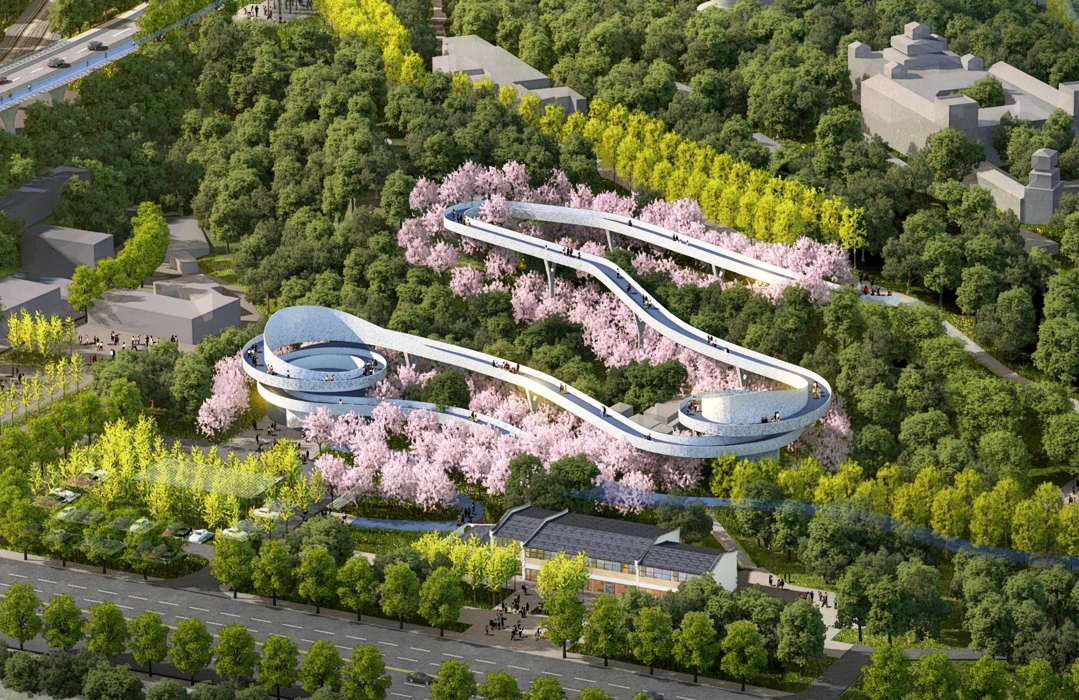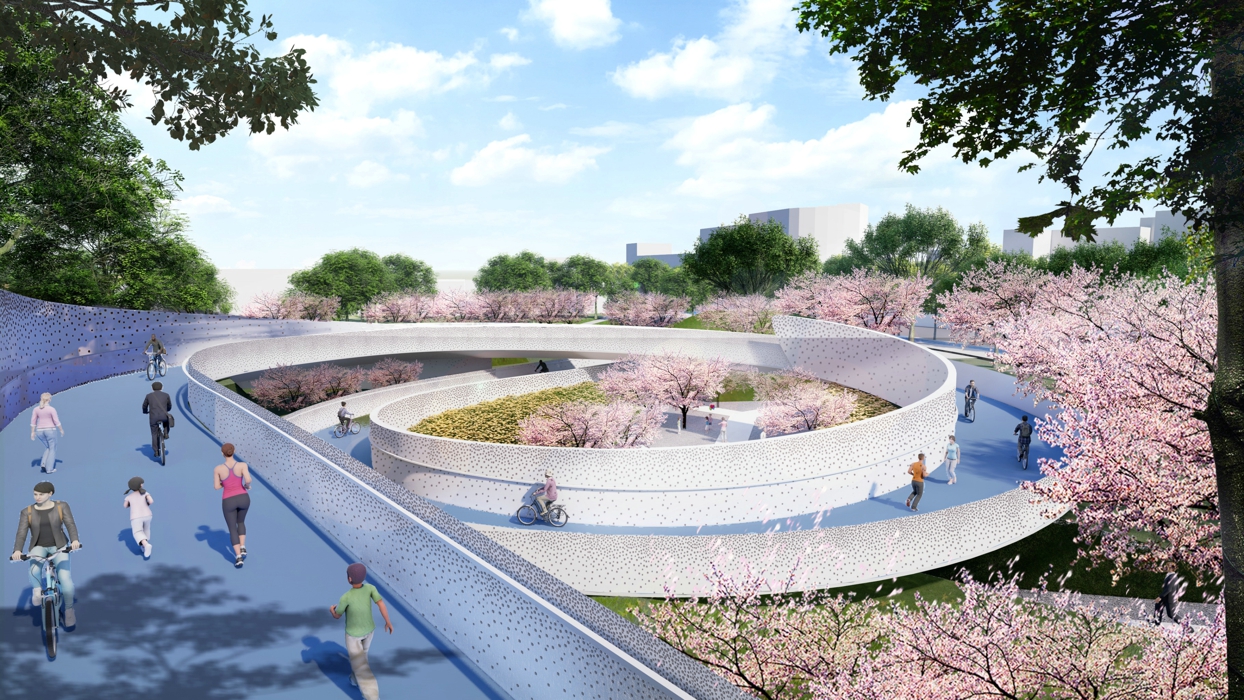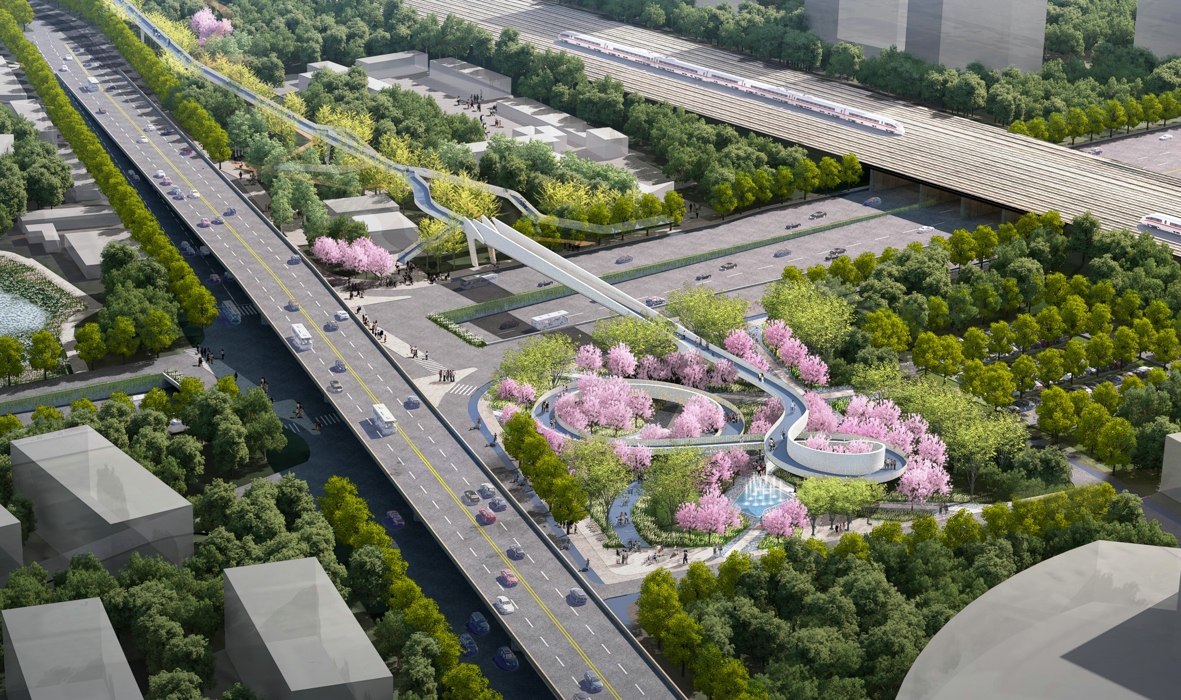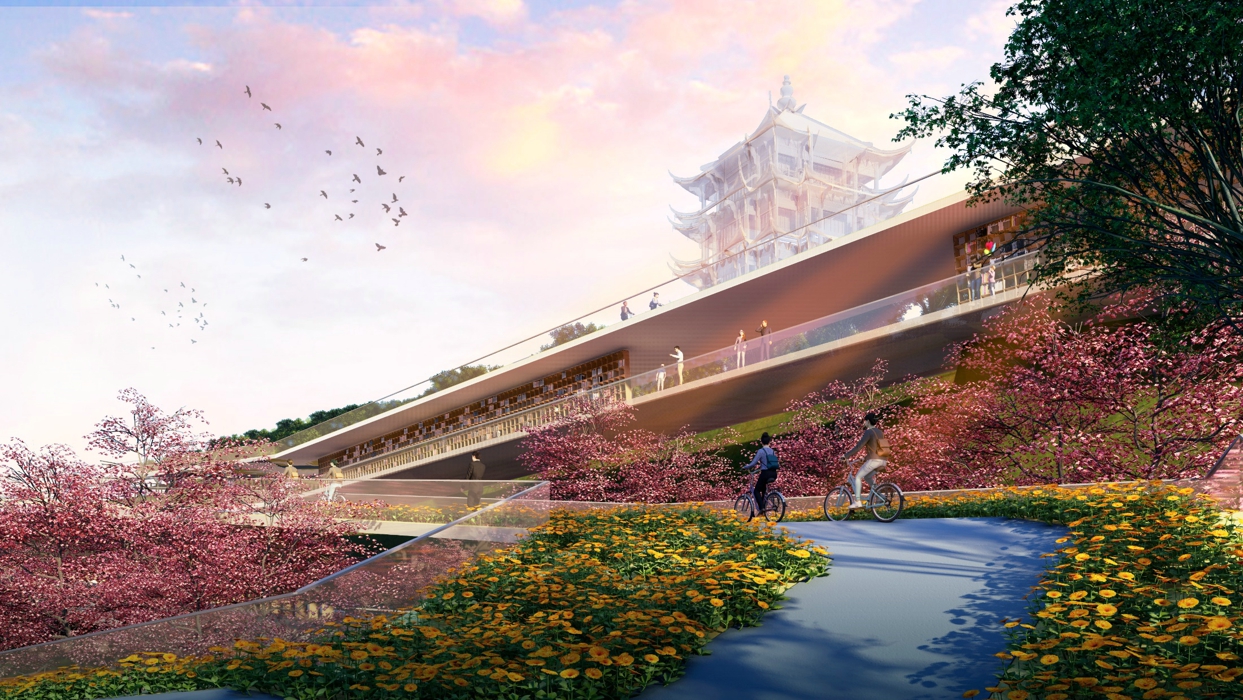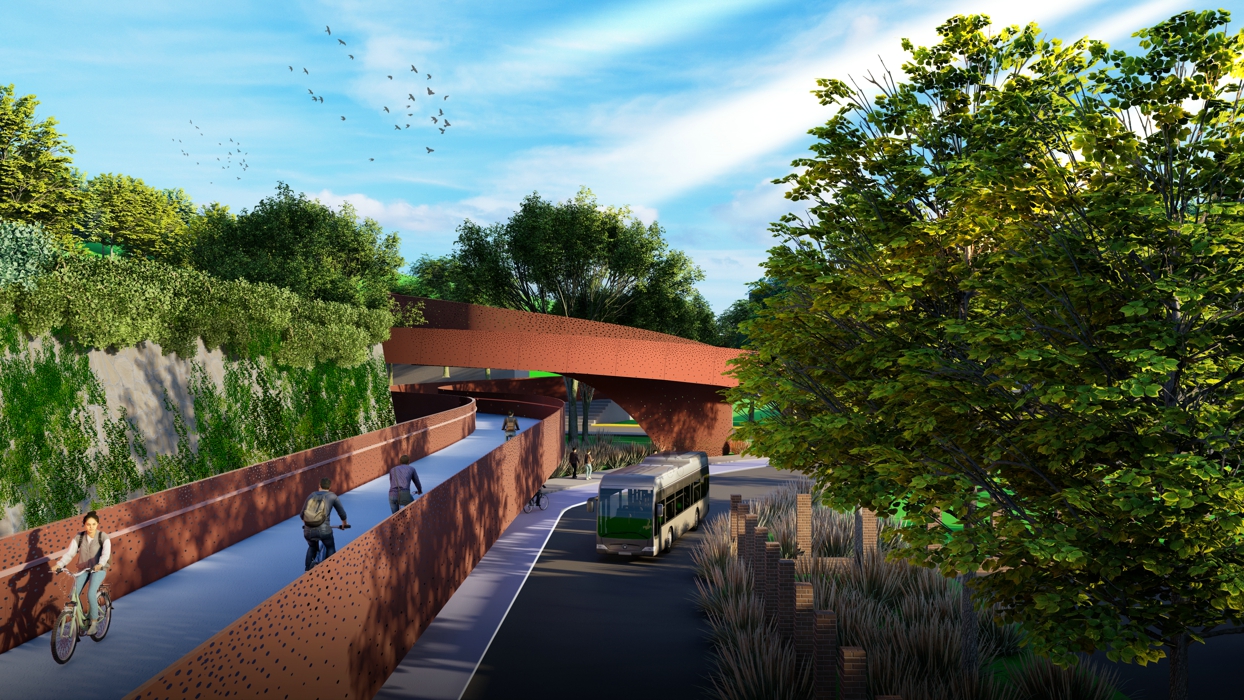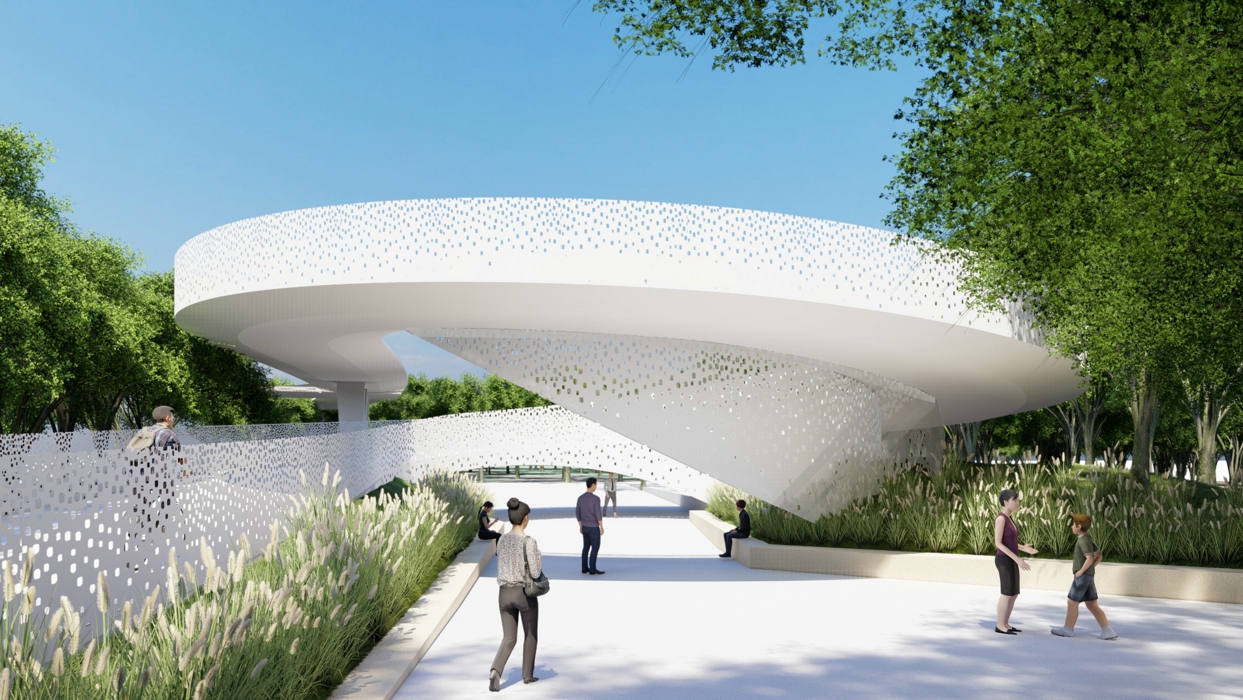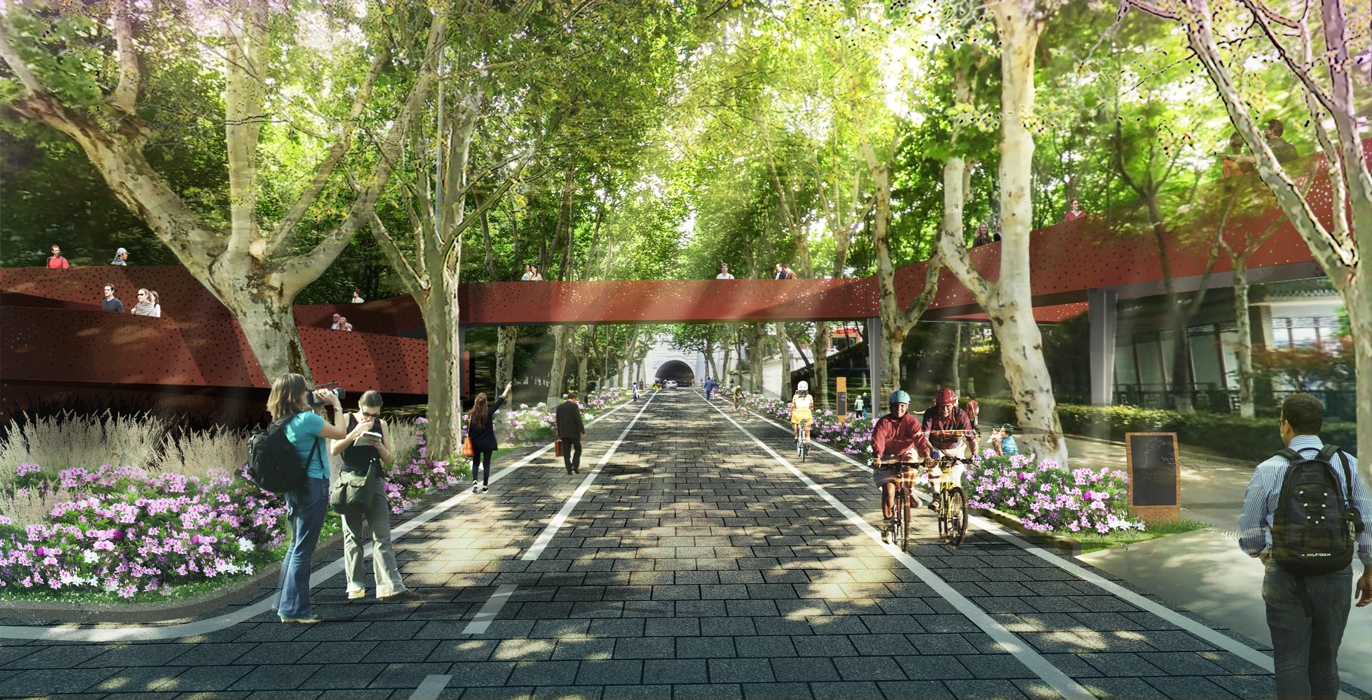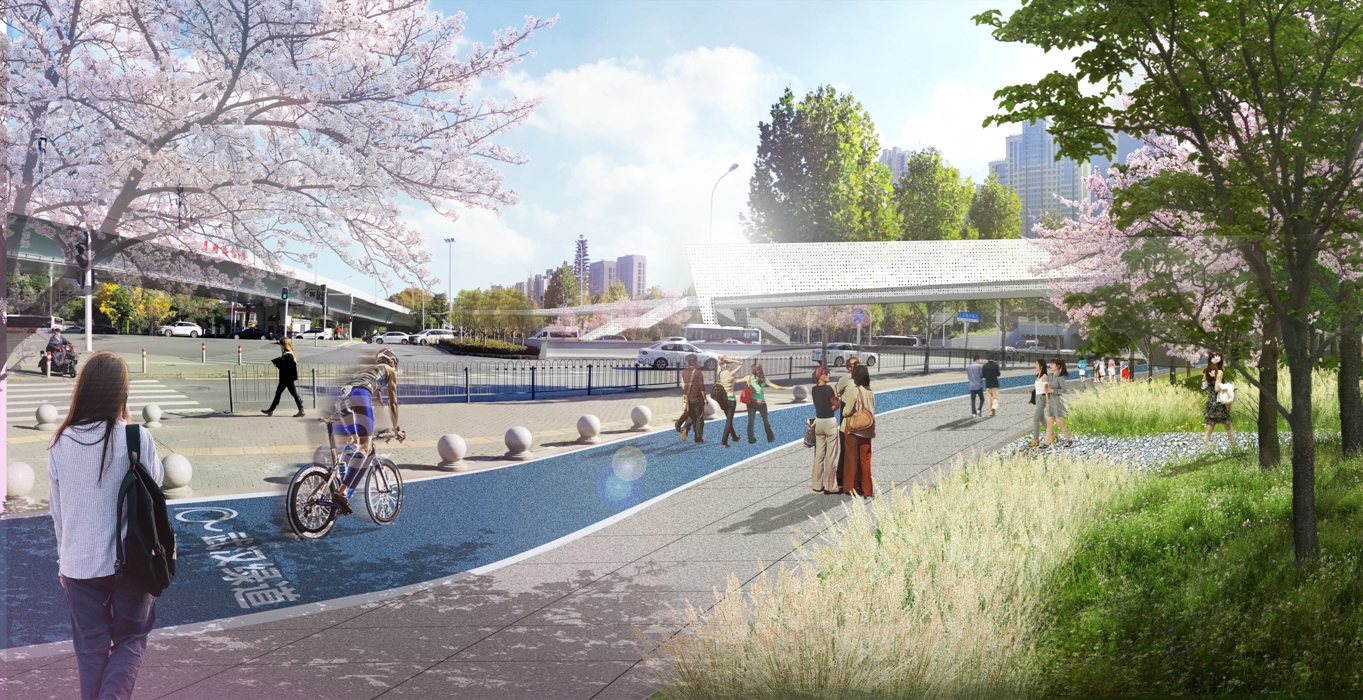Wuhan Greenway Landscape Bridges
Project Information
- Project Location:
- China Wuhan, Hubei
- Project Scale:
- 4381m
- Design Time:
- December 2021
Project Profile
The two rivers, the thousand mountains, and the hundred lakes are like jewels embedded in the land. The greenway acts as a ribbon that strings together these blue-green jewels, playing a vital guiding role for the corridors. Although ecological elements such as the eastern and western mountain ranges and water systems are connected in spirit, they are scattered and fragmented. Twenty-seven rivers, lakes, and canals naturally disperse along the Yangtze River, but no coherent water space has formed. The mountain ranges are distributed as scattered points with low continuity.
The bridges play a crucial role as hubs where mountains and waters meet, connecting greenway networks running vertically and horizontally, and linking the eastern and western mountain greenways. The transformation of the historic “First Bridge on the Yangtze River” reflects a people-centered approach prioritizing slow travel, all-age friendliness, and green mobility.
This is a super-large greenway project featuring six cross-line bridges and one aerial elevator. The total bridge length is 4,381 meters, with existing road reconstruction totaling 8,477 meters. The project faces five main challenges: how to achieve continuity of the greenway and harmony with the historical context amid numerous cultural heritage protection sites; how to overcome seven discontinuities caused by urban roads, mountain and river barriers, underground facilities, and intersecting railways, and how to utilize these breaks; how to integrate with urban transit nodes to enable seamless transfer between public transport and slow travel; how to clarify main visitor routes at complex scenic entrances and provide continuous visitor experiences; and how to integrate with urban service facilities and make intensive use of existing infrastructure.
As a world-class urban showcase, this slow-travel corridor connects the mountain-water cityscape and integrates the cultural impressions of Wuhan. It also plays a key role in unifying urban space, linking urban functions, connecting greenway networks with tourism resources, and leaving interfaces for future greenway construction. The turtle-snake shaped Yangtze city offers endless possibilities for “travel” and “movement.” Witness spring blossoms and autumn leaves, experiencing culture through the seasons. The design features one line, two levels, and eight spans, connecting one lake, one bridge, two mountains, and multiple points, enabling lake viewing, urban exploration, river watching, and tower climbing.
The design adopts an “infinite” loop form that follows the terrain, minimizing land occupation and smoothing elevation changes. The bridge shape evokes the flowing waters and bravery of the great river city, with smooth, flowing lines. The entire main route is barrier-free, embodying the spirit of the Yangtze river city. Inspired by the Möbius strip symbolizing “infinity,” the loop form follows the terrain for seamless connectivity and unrestricted movement. The landscape bridge floats above cherry blossoms, which symbolize wisdom and courage, highlighting the city’s heroic spirit. The integration of landscape and bridge considers terrain stacking to conceal bridge foundations; a valley is excavated to create a “cherry blossom cool valley.” The bridge literally floats above the blossoms, hidden within the forest. The bridge is integrated with architectural functions, with the roof forming a “Nine-bend Flower Street,” creating an atmosphere of walking in the sky.
